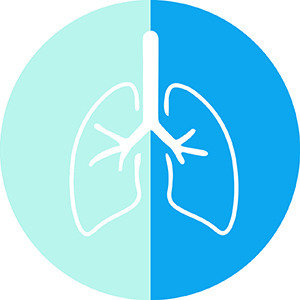COPD sleep phenotypes: Genesis of respiratory failure in COPD

Submitted: January 22, 2021
Accepted: August 10, 2021
Published: November 4, 2021
Accepted: August 10, 2021
Abstract Views: 1668
PDF: 903
Publisher's note
All claims expressed in this article are solely those of the authors and do not necessarily represent those of their affiliated organizations, or those of the publisher, the editors and the reviewers. Any product that may be evaluated in this article or claim that may be made by its manufacturer is not guaranteed or endorsed by the publisher.
All claims expressed in this article are solely those of the authors and do not necessarily represent those of their affiliated organizations, or those of the publisher, the editors and the reviewers. Any product that may be evaluated in this article or claim that may be made by its manufacturer is not guaranteed or endorsed by the publisher.
Similar Articles
- Carlos A. Jiménez-Ruiz, Marcos Garcia Rueda, Manuel A. Martinez Muñiz, Jacobo Sellarés, Maria A. Jiménez-Fuentes, Lourdes Lázaro Asegurado, Esther RodrÃguez Gonzalez, Concepción Rodriguez Garcia, Oriol Armengol, Emilia Abad, Teresa Peña, Adolfo Domenech del Rio, Juan A. Riesco Miranda, Varenicline in smokers with severe or very severe COPD after 24 weeks of treatment. A descriptive analysis: VALUE study , Monaldi Archives for Chest Disease: Vol. 87 No. 3 (2017)
- O. Marrone, A. Salvaggio, M. Gioia, A. Bonanno, M. Profita, L. Riccobono, A. Zito, G. Insalaco, M.R. Bonsignore, Reticulocytes in untreated Obstructive Sleep Apnoea , Monaldi Archives for Chest Disease: Vol. 69 No. 3 (2008): Pulmonary series
- Alberto Papi, Maria Sandra Magnoni, Carmelo Caio Muzzio, Gianmarco Benso, Andrea Rizzi, Phenomenology of COPD: interpreting phenotypes with the ECLIPSE study , Monaldi Archives for Chest Disease: Vol. 83 No. 1-2 (2016): Pulmonary series
- Abhishekl Agarwal, Sakshi Batra, Rajendra Prasad, Anand Verma, Abdul Q. Jilani, Surya Kant, A study on the prevalence of depression and the severity of depression in patients of chronic obstructive pulmonary disease in a semi-urban Indian population , Monaldi Archives for Chest Disease: Vol. 88 No. 1 (2018)
- A. Corrado, T. Renda, S. Bertini, Long-Term Oxygen Therapy in COPD: evidences and open questions of current indications , Monaldi Archives for Chest Disease: Vol. 73 No. 1 (2010): Pulmonary series
- Claudio F. Donner, Sandro Amaducci, Elena Bacci, Sandra Baldacci, Maria L. Bartoli, Gianfranco M. Beghi, Alida Benfante, Sara Brighindi, Lucio Casali, Daniela Castiglia, Mario Cazzola, Alessandro Celi, Silvana Cianchetti, Giorgio Colombo, Claudia Crimi, Federico L. Dente, Giuseppe Di Maria, Annalisa Di Maria, Manuela Latorre, Federico Lavorini, Sara Maio, Claudia Mannini, Riccardo Messina, Pier Luigi Paggiaro, Patrizia Pignatti, David Price, Nicola Scichilone, Marzia Simoni, Antonio Spanevello, Martina Stagno d’Alcontres, Shawna Tan, Roberto Torchio, Giovanni Viegi, Dina Visca, Emiel F.M. Wouters, Shaylynn Yu Hui Xin, Inhalation therapy in the next decade: Determinants of adherence to treatment in asthma and COPD , Monaldi Archives for Chest Disease: Vol. 88 No. 1 (2018)
- Ganesh Narwade, Manu Madan, Rohit Kumar, Pranav Ish, AJ Mahendran, Rajnish Kaushik, Nitesh Gupta, Clinical characteristics of non-sleepy obstructive sleep apnea patients: a study in a tertiary care sleep clinic in India , Monaldi Archives for Chest Disease: Early Access
- D. Scala, S. Cozzolino, G. D’Amato, G. Cocco, A. Sena, P. Martucci, E. Ferraro, A.A. Mancini, Sharing knowledge is the key to success in a patient-physician relationship: how to produce a patient information leaflet on COPD , Monaldi Archives for Chest Disease: Vol. 69 No. 2 (2008): Pulmonary series
- M. Justine, F. Tahirah, V. Mohan, Health-related quality of life, lung function and dyspnea rating in COPD patients , Monaldi Archives for Chest Disease: Vol. 79 No. 3-4 (2013): Pulmonary series
- B.R. O’Driscoll, Short burst oxygen therapy in patients with COPD , Monaldi Archives for Chest Disease: Vol. 69 No. 2 (2008): Pulmonary series
You may also start an advanced similarity search for this article.

 https://doi.org/10.4081/monaldi.2021.1776
https://doi.org/10.4081/monaldi.2021.1776





